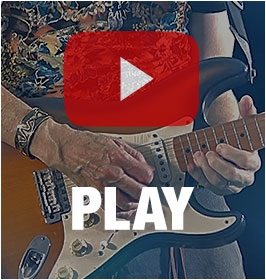The Band, Santana, Is Formed
Within a couple of years of moving to San Francisco, Carlos met the person who would become his keyboardist, vocalist, and musical collaborator for the beginning of Santana’s career: Gregg Rolie. It was during these early years that Santana recorded the two albums that, arguably, became his best known — and best loved.
First was the self-titled Santana, featuring “Evil Ways,” “Jingo,” and “Soul Sacrifice” — a song that was forever immortalized by the inclusion in the ground-breaking film, Woodstock. The followup, Abraxas, spawned mega hits “Black Magic Woman,” “Oye Como Va,” and one of his best loved instrumentals: “Samba Pa Ti.”
In a radio interview, Gregg Rolie recalls the first time he and Carlos Santana jammed together. The session occurred in a garage in the San Francisco bay area, and when the cops came in response to complaints, Rolie and Santana hid in a neighboring bean field!
The band (originally called “The Santana Blues Band,” and later shortened to the more memorable “Santana”), was unique even for the experimental San Francisco scene. A blend of blues guitar and organ riffs, gritty vocals, and Latin percussion, Santana quickly formed a name for themselves in the area. But it wasn’t until concert promoter and impresario Bill Graham got behind them that they gained national recognition.
The Concert That Launched Santana
In 1969, nearly half a million people gathered on some farm land in Woodstock, New York, for an event that has since become the most famous concert in history. Although Santana’s debut album was not even finished at this point, their steadfast champion, Bill Graham, convinced the promoters to include the band in the line-up. So several hundred thousand people were introduced to a band of which most had never even heard.
As big a milestone as that concert appearance was, it was dwarfed by the influence of the film, Woodstock. Featuring an 11-minute version of the band’s instrumental, Soul Sacrifice, the movie literally launched Santana into the world’s consciousness. (In the film, you can see Carlos Santana in a performing frenzy, as he tears through the song.)
Since the movie was released within months of Santana’s debut album, it was integral in promoting that album. Anyone not convinced has only to recall that Credence Clearwater Revival, one of the main headliners at the event, is not generally associated with that show. The reason? John Fogerty refused to release the video of their performance, as he felt it wasn’t up to par, so it wasn’t included in the film.

